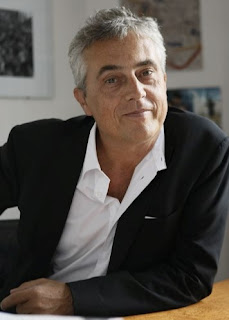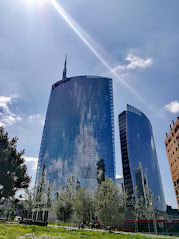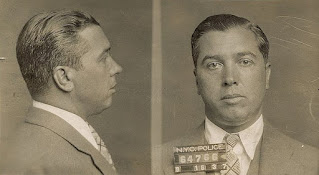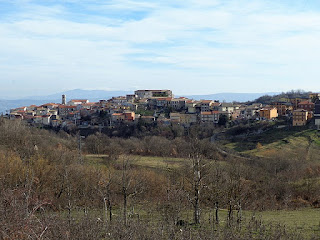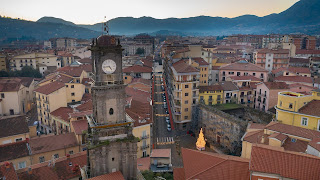Charles Forte - businessman and hotelier
Multi-billion pound empire started with a single café
Businessman Charles Forte - later Sir Charles and then Baron Forte of Ripley - was born Carmine Forte in the hamlet of Mortale in the Frosinone province of southern Lazio on this day in 1908. Forte was most famous for his hotels empire, which once numbered more than 800 properties ranging from Travelodge motels to the high-end luxury of the Grosvenor House in London and the George V in Paris. Starting with a single milk bar in London, opened in 1935, he grew a business that became so vast that, when it changed hands 61 years later, it was valued at £3.9 billion. Charles Forte was brought up largely in Scotland, where his family emigrated in 1911 after his father, Rocco, decided to follow the lead of his brother by abandoning farming in his impoverished homeland to try his luck in the catering business abroad. Rocco ran a café and ice cream parlour in Alloa, a town in central Scotland about an hour's drive north-east of Glasgow and a similar distance to the north-west of Edinburgh. Charles went to school in Alloa and nearby Dumfries before completing his education at the Mamiani High School in Rome. Read more…
________________________________________________________
Amelita Galli-Curci - soprano
Singer’s beautiful voice lives on thanks to early recordings
Amelita Galli-Curci, one of the most popular Italian opera singers and recording artists of the early 20th century, died on this day in 1963. Galli-Curci was a ‘coloratura’ soprano and her voice has been described as ‘florid, vibrant, agile and able to perform trills.’ Although she was largely self-taught her voice was much admired and it has been claimed she was encouraged to become an opera singer by composer Pietro Mascagni, who was a family friend. She was born Amelita Galli in Milan in 1881 and studied the piano at the Milan Conservatory, which is in the centre of the city close to the Duomo. She made her stage debut as a soprano at Trani in 1906, singing Gilda in Verdi’s Rigoletto. She was widely acclaimed and her career took off from there. In 1908 she married an Italian nobleman, the Marquese Luigi Curci and she subsequently attached his surname to hers. She remained known as Amelita Galli-Curci even after they divorced. She sang in just two performances of Donizetti’s Lucia di Lamermoor with Enrico Caruso in Buenos Aires in 1915 but they went on to make wonderful recordings together. Read more…
________________________________________________________
Letizia Moratti – politician and businesswoman
First woman to be Mayor of Milan and head of RAI
Letizia Moratti, one of Europe’s best-known businesswomen and a successful politician, was born on this day in 1949 in Milan. Married to the oil magnate Gianmarco Moratti, she was chair of the state television network RAI between 1994 and 1996, a minister in former prime minister Silvio Berlusconi’s second and third administrations, and Mayor of Milan between 2006 and 2011. Born Letizia Maria Brichetto Arnaboldi, her antecedents are the Brichetto family from Genoa, who founded the first insurance brokerage company in Italy, and the noble Arnaboldi family from Milan. Her grandmother, Mimona Brichetto Arnaboldi, was a society hostess in the 1930s and an outspoken opponent of Fascism. Letizia attended a private school in Milan and had classical dance classes at the Carla Strauss Academy in the Brera district. She attended the University of Milan and graduated in political science. At around the same time, she met Gianmarco Moratti, an oil contractor whose brother, Massimo, a petrochemicals tycoon, is the former chairman of Internazionale. With funding from the Moratti family, Letizia launched her first business at the age of 25. Read more…
________________________________________________________
Enrico Bombieri – Mathematician
Brilliant professor who won top award in his field at just 34
The mathematician Enrico Bombieri, one of the world’s leading authorities on number theory and analysis, which has practical application in the world of encryption and data transmission, was born on this day in 1940 in Milan. Bombieri, who is also an accomplished painter, won the Fields Medal, an international award for outstanding discoveries in mathematics regarded in the field of mathematical sciences as equivalent to a Nobel Prize, when he was a 34-year-old professor at the University of Pisa in 1974. As well as analytic number theory, he has become renowned for his expertise in other areas of highly advanced mathematics including algebraic geometry, univalent functions, theory of several complex variables, partial differential equations of minimal surfaces, and the theory of finite groups. Mathematics textbooks now refer to several discoveries named after him in his own right or with fellow researchers, including the Bombieri-Lang conjecture, the Bombieri norm and the Bombieri–Vinogradov theorem. He has been described as a "problem-oriented" scholar - one who tries to solve deep problems rather than to build theories. Read more…










